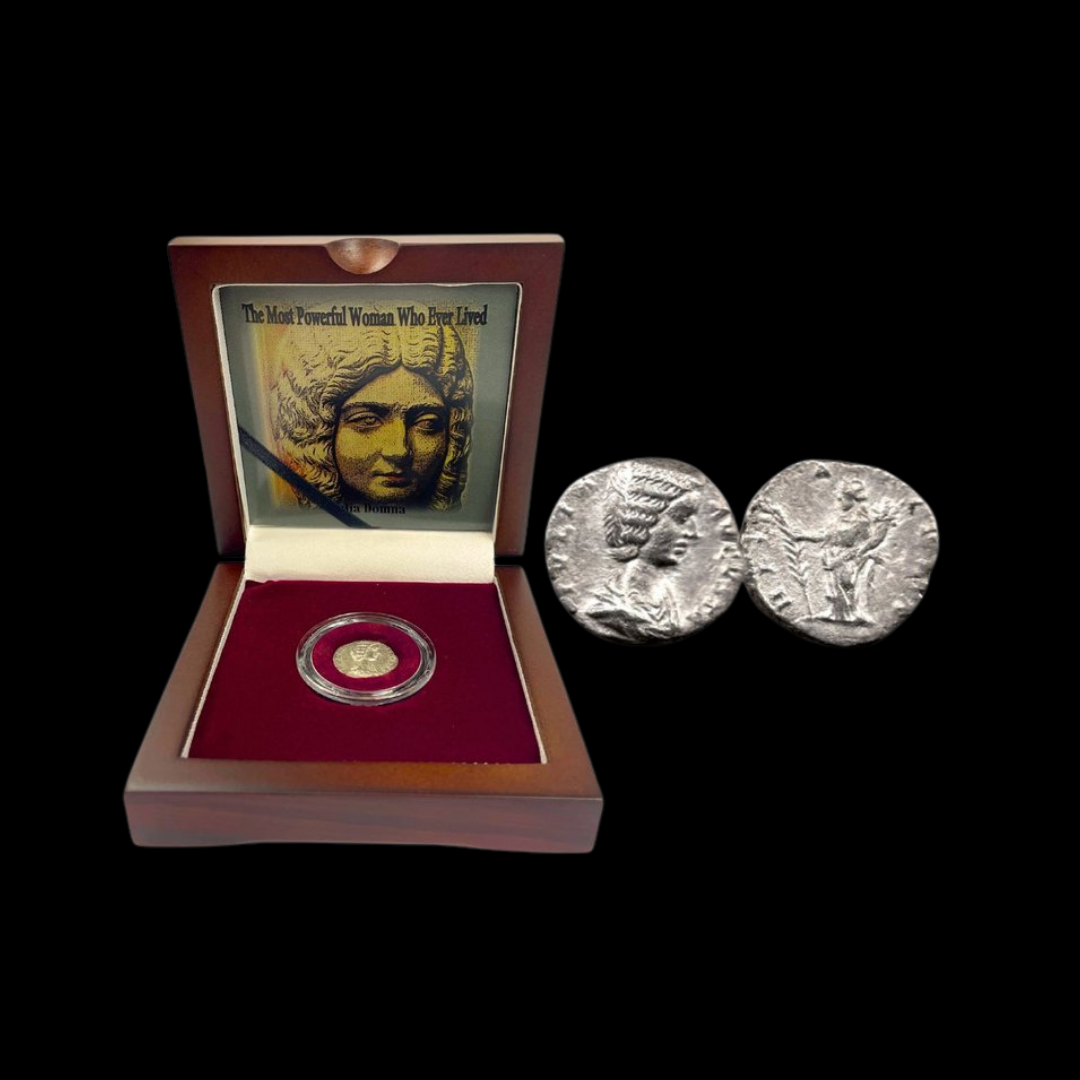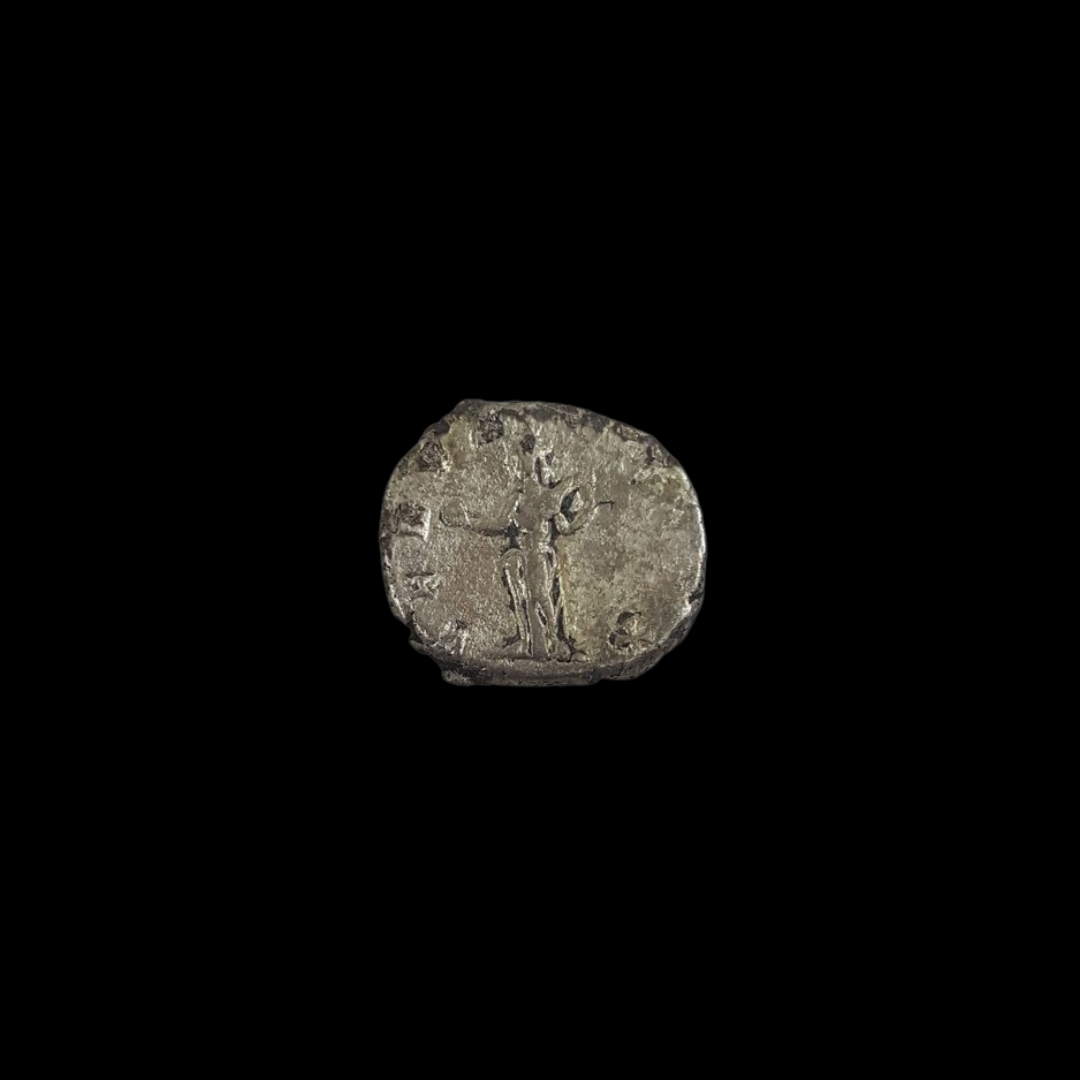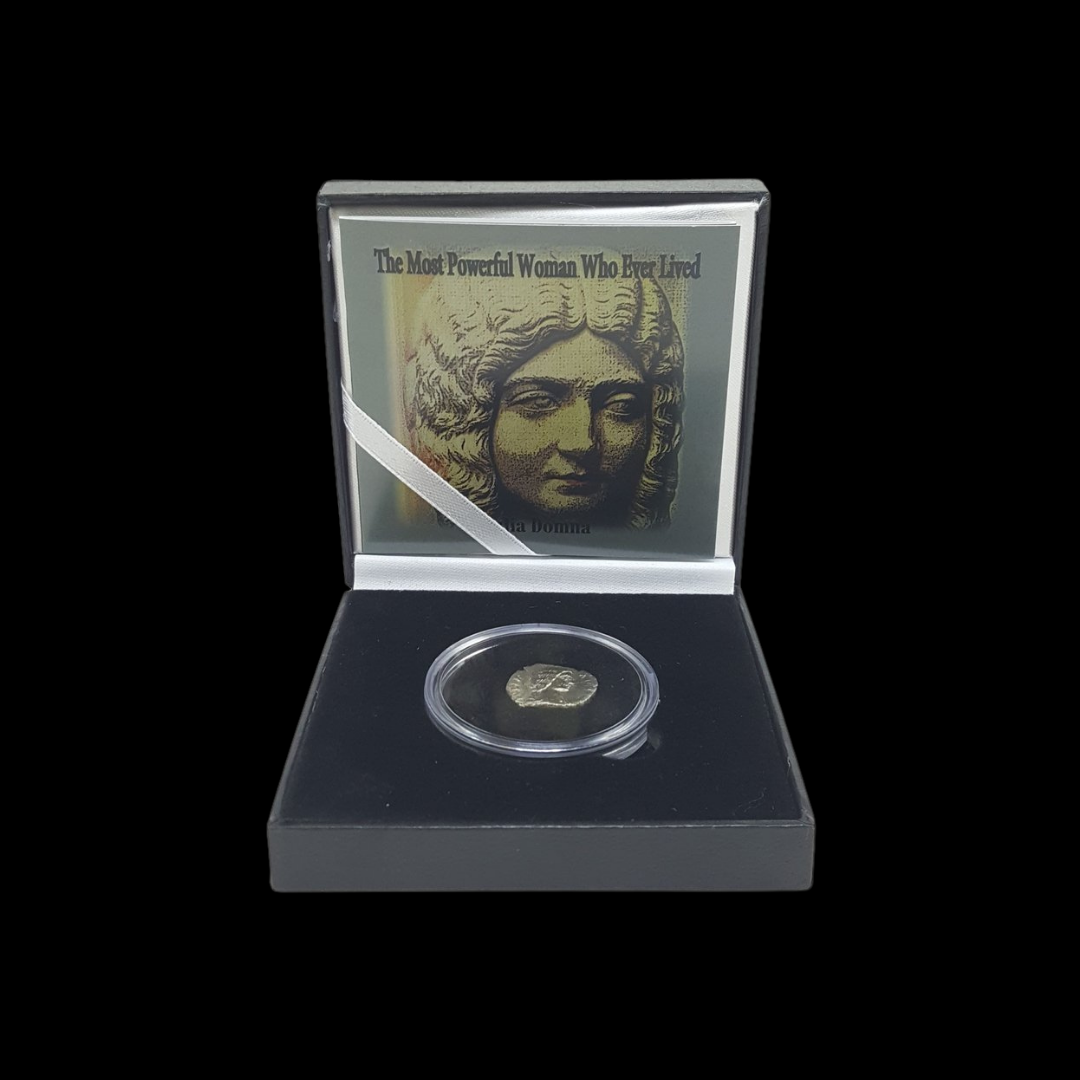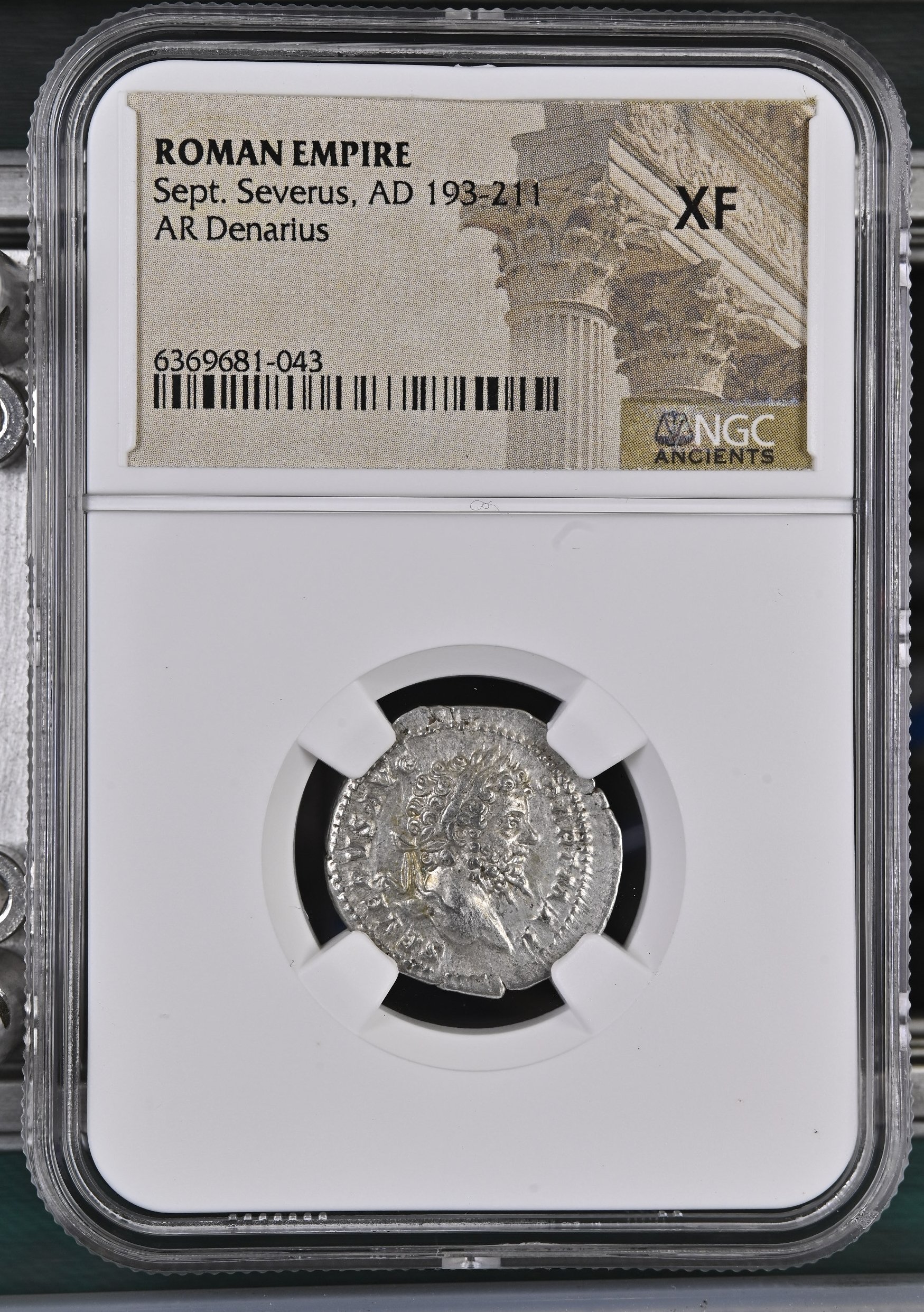 Image 1 of 2
Image 1 of 2

 Image 2 of 2
Image 2 of 2



Emperor Gallienus Bronze Antoninianus from Ancient Rome (about 1,755 years ago)
This coin is an Antoninianus from the reign of Emperor Gallienus, who ruled the Roman Empire from 253 to 268 AD. It was minted in Rome (modern Italy) around 267–268 AD during a period of crisis and military conflict for the Empire. The coin reflects the imagery and values of ancient Roman society as the Empire struggled to maintain unity.
Coin Description:
Front side: The obverse (front) shows a radiate bust (head) of Emperor Gallienus facing right, wearing a crown with radiating points, and the inscription “GALLIENVS AVG” (short for Gallienus Augustus, meaning "Emperor Gallienus").
Back side: The reverse (back) shows a tigress walking to the left with the legend “LIBERO P CONS AV,” which refers to liberty and the official who minted the coin. The letter "B" below the tigress (in the exergue) indicates the workshop (officina 2) in the mint.Technical Details:
Technical Details:
Material composition: Bronze (AE, meaning "aes" or copper-alloy)
Denomination: Antoninianus (a coin worth two denarii, common in Roman currency)
Catalog/reference numbers: Gobl-713b, Cunetio-1341, RIC-230, C-586
Date/period of minting: Circa 267–268 AD
Historical Significance:
This coin was minted during one of the most challenging periods in Roman history, when the Empire (in modern Italy and surrounding regions) was facing invasions and internal turmoil. It's a great example of how Roman emperors used imagery—like powerful animals and imperial portraits—to communicate strength and stability. As an antoninianus, this coin reflects the inflation and debasement of Roman coinage, which was common as the monetary system struggled to keep up with the Empire’s needs.
This coin is an Antoninianus from the reign of Emperor Gallienus, who ruled the Roman Empire from 253 to 268 AD. It was minted in Rome (modern Italy) around 267–268 AD during a period of crisis and military conflict for the Empire. The coin reflects the imagery and values of ancient Roman society as the Empire struggled to maintain unity.
Coin Description:
Front side: The obverse (front) shows a radiate bust (head) of Emperor Gallienus facing right, wearing a crown with radiating points, and the inscription “GALLIENVS AVG” (short for Gallienus Augustus, meaning "Emperor Gallienus").
Back side: The reverse (back) shows a tigress walking to the left with the legend “LIBERO P CONS AV,” which refers to liberty and the official who minted the coin. The letter "B" below the tigress (in the exergue) indicates the workshop (officina 2) in the mint.Technical Details:
Technical Details:
Material composition: Bronze (AE, meaning "aes" or copper-alloy)
Denomination: Antoninianus (a coin worth two denarii, common in Roman currency)
Catalog/reference numbers: Gobl-713b, Cunetio-1341, RIC-230, C-586
Date/period of minting: Circa 267–268 AD
Historical Significance:
This coin was minted during one of the most challenging periods in Roman history, when the Empire (in modern Italy and surrounding regions) was facing invasions and internal turmoil. It's a great example of how Roman emperors used imagery—like powerful animals and imperial portraits—to communicate strength and stability. As an antoninianus, this coin reflects the inflation and debasement of Roman coinage, which was common as the monetary system struggled to keep up with the Empire’s needs.
This coin is an Antoninianus from the reign of Emperor Gallienus, who ruled the Roman Empire from 253 to 268 AD. It was minted in Rome (modern Italy) around 267–268 AD during a period of crisis and military conflict for the Empire. The coin reflects the imagery and values of ancient Roman society as the Empire struggled to maintain unity.
Coin Description:
Front side: The obverse (front) shows a radiate bust (head) of Emperor Gallienus facing right, wearing a crown with radiating points, and the inscription “GALLIENVS AVG” (short for Gallienus Augustus, meaning "Emperor Gallienus").
Back side: The reverse (back) shows a tigress walking to the left with the legend “LIBERO P CONS AV,” which refers to liberty and the official who minted the coin. The letter "B" below the tigress (in the exergue) indicates the workshop (officina 2) in the mint.Technical Details:
Technical Details:
Material composition: Bronze (AE, meaning "aes" or copper-alloy)
Denomination: Antoninianus (a coin worth two denarii, common in Roman currency)
Catalog/reference numbers: Gobl-713b, Cunetio-1341, RIC-230, C-586
Date/period of minting: Circa 267–268 AD
Historical Significance:
This coin was minted during one of the most challenging periods in Roman history, when the Empire (in modern Italy and surrounding regions) was facing invasions and internal turmoil. It's a great example of how Roman emperors used imagery—like powerful animals and imperial portraits—to communicate strength and stability. As an antoninianus, this coin reflects the inflation and debasement of Roman coinage, which was common as the monetary system struggled to keep up with the Empire’s needs.
Publius Licinius Egnatius Gallienus (/ˌɡæliˈɛnəs/; c. 218 – September 268) was Roman emperor with his father Valerian from 253 to 260 and alone from 260 to 268. He ruled during the Crisis of the Third Century that nearly caused the collapse of the empire. He won numerous military victories against usurpers and Germanic tribes, but was unable to prevent the secession of important provinces. His 15-year reign was the longest in half a century.
Born into a wealthy and traditional senatorial family, Gallienus was the son of Valerian and Mariniana. Valerian became Emperor in September 253 and had the Roman Senate elevate Gallienus to the rank of Augustus. Valerian divided the empire between him and his son, with Valerian ruling the east and his son the west. Gallienus defeated the usurper Ingenuus in 258 and destroyed an Alemanni army at Mediolanum in 259.


















